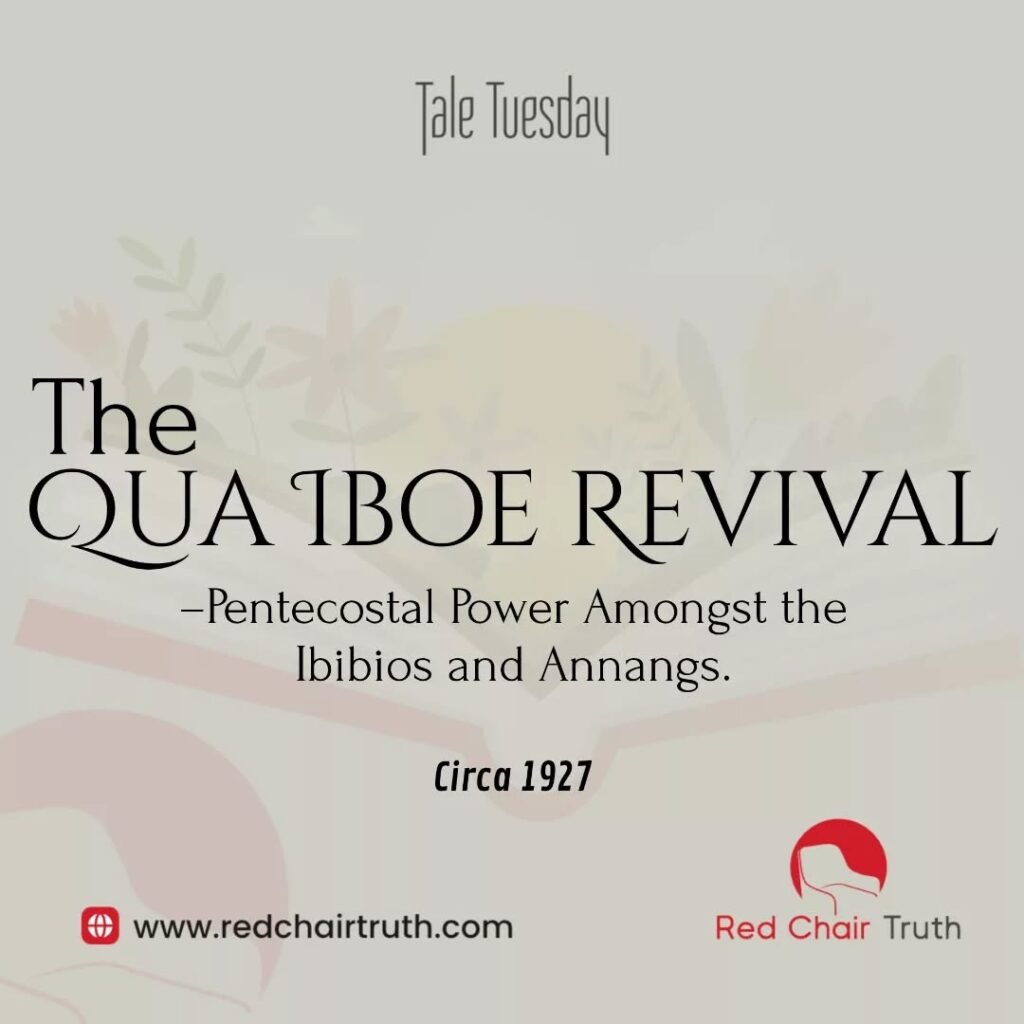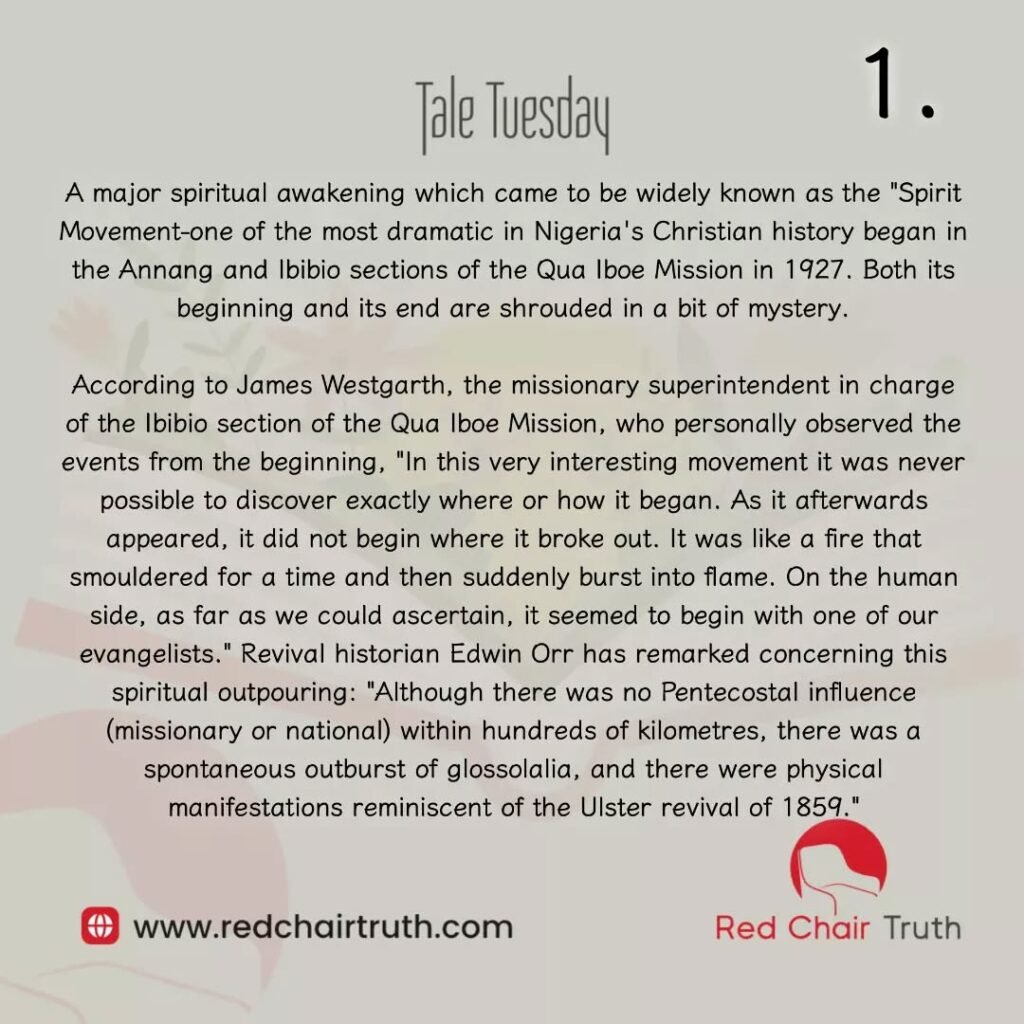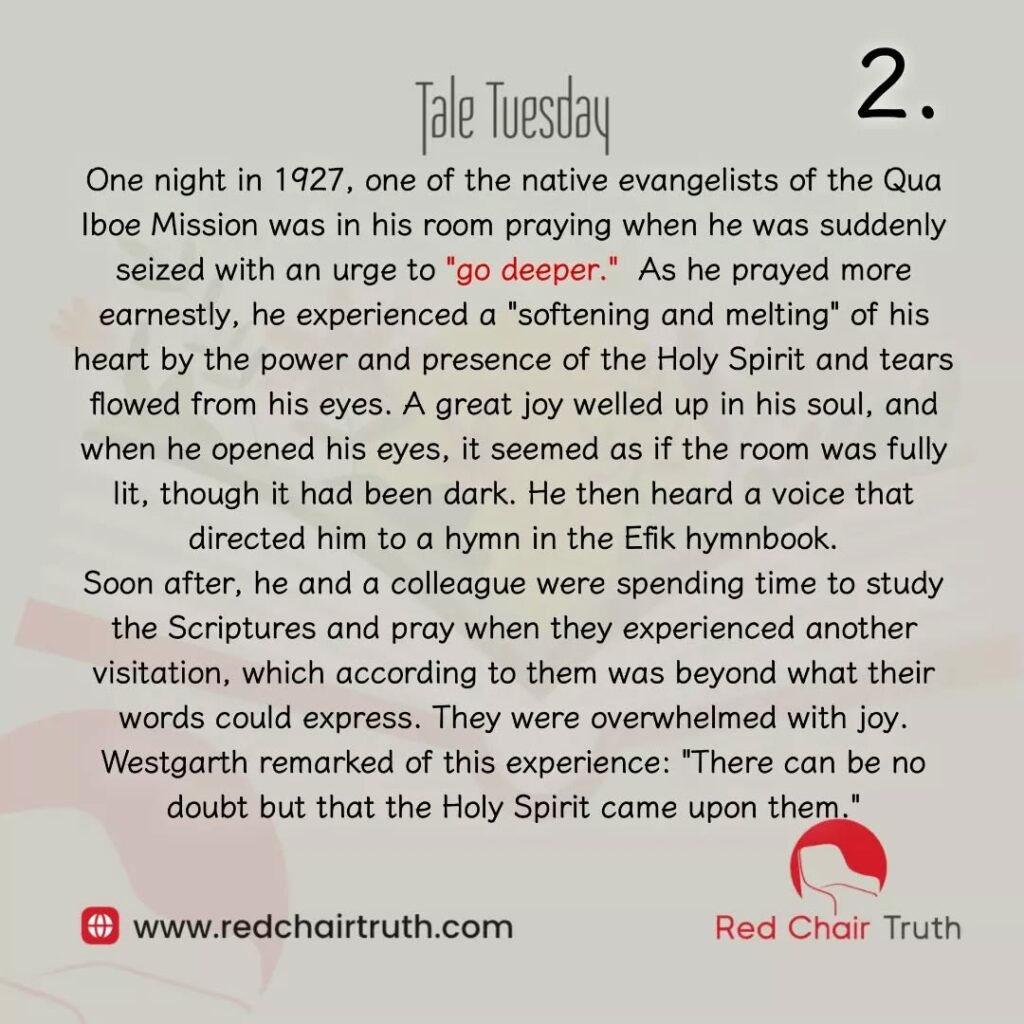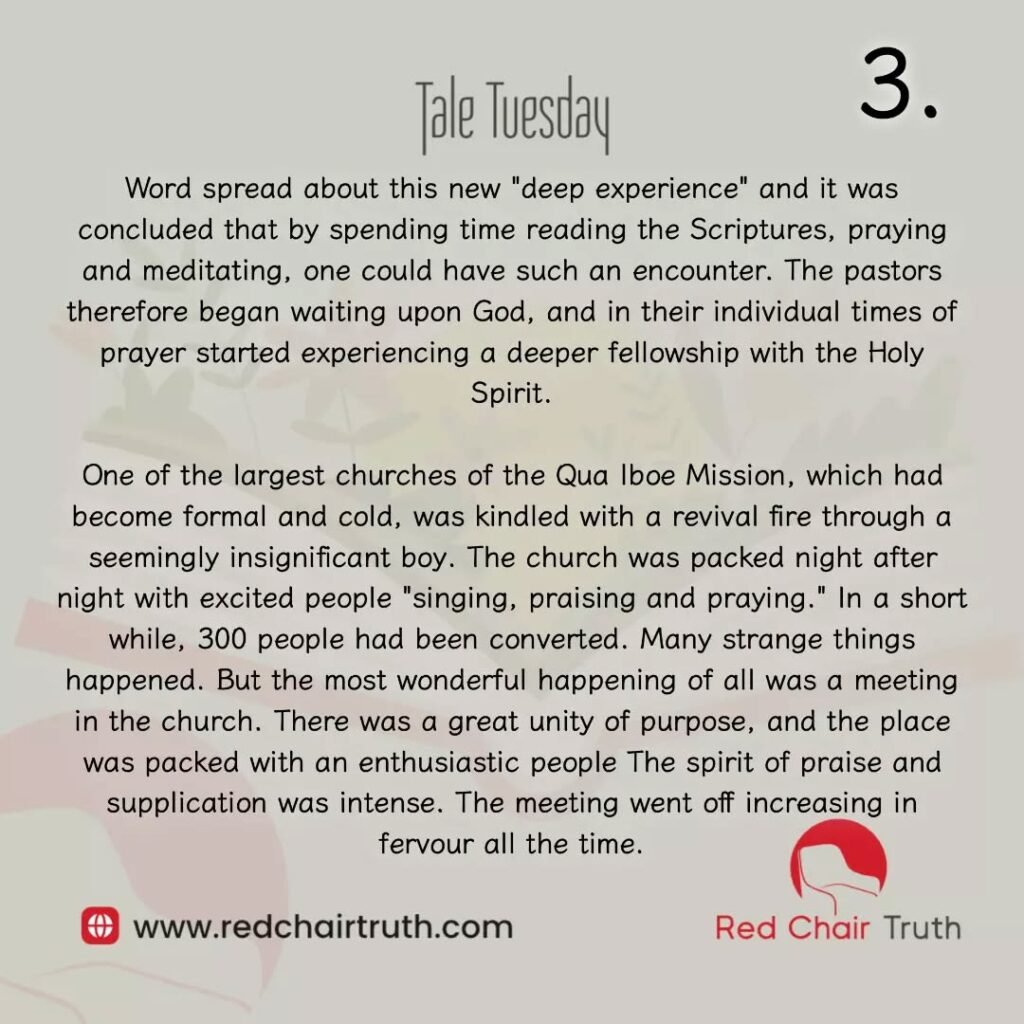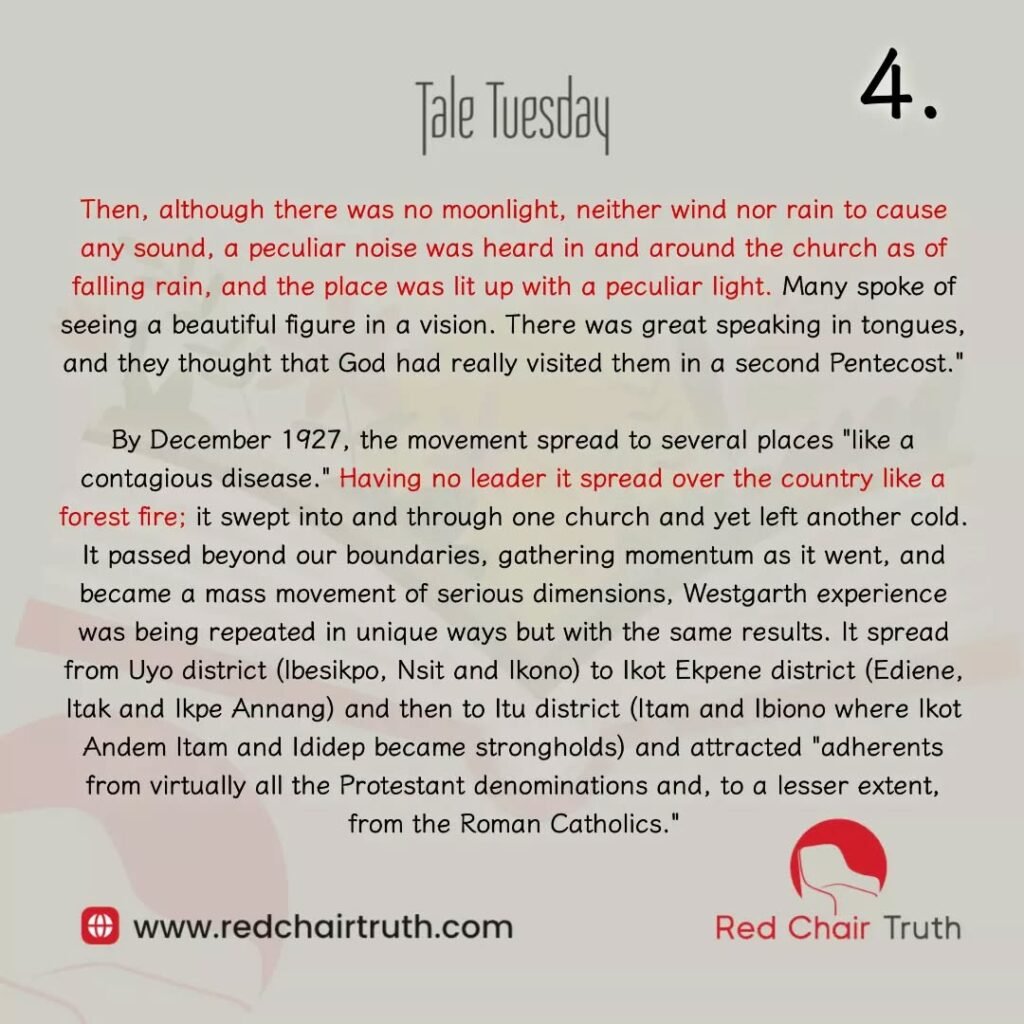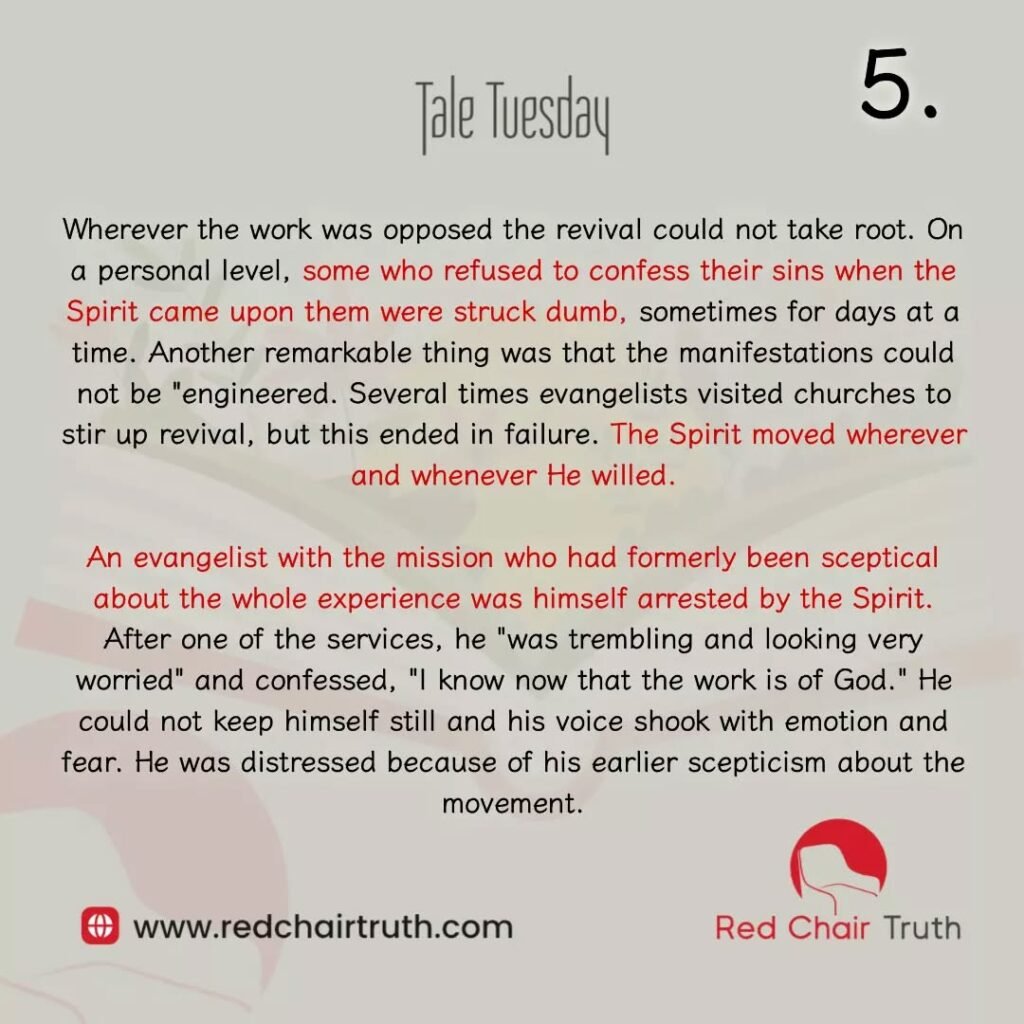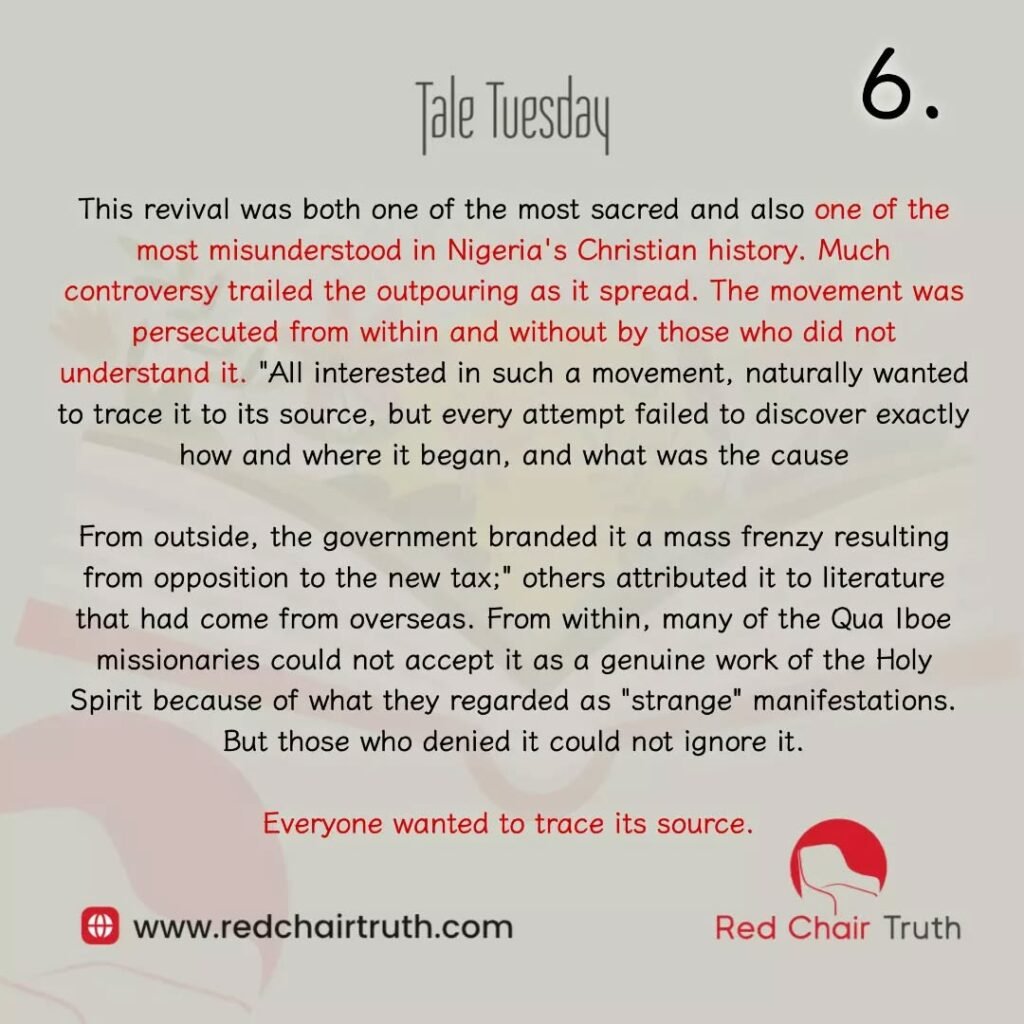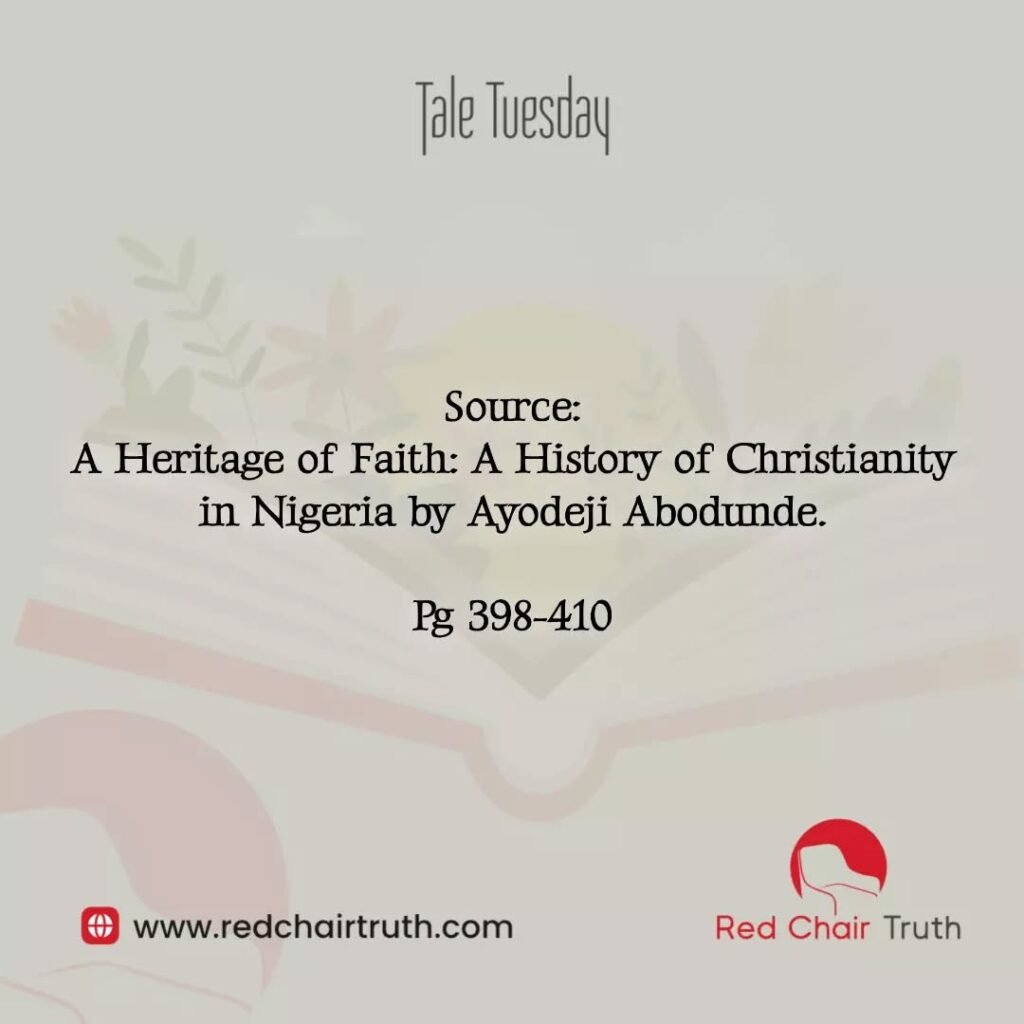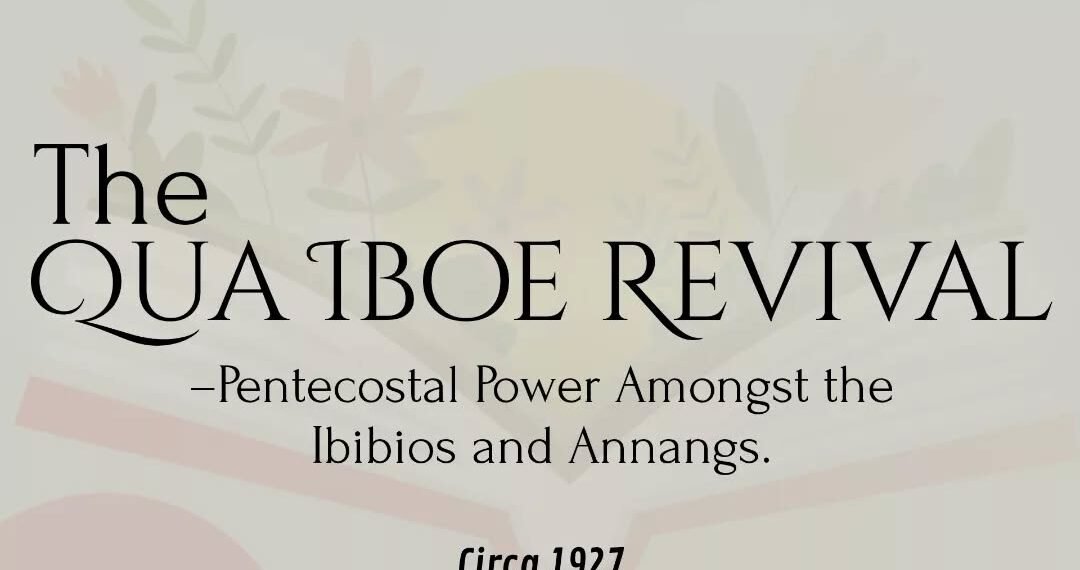Introduction: The Birth of the Spirit Movement (1927)
A major spiritual awakening, later called the “Spirit Movement,” emerged in 1927 within the Annang and Ibibio regions of the Qua Iboe Mission—one of the most dramatic revivals in Nigeria’s Christian history.
Its exact origin and conclusion remain mysterious.
Missionary superintendent James Westgarth, who personally witnessed it, wrote that its beginnings were difficult to trace:
“It was like a fire that smouldered for a time and then suddenly burst into flame. On the human side, as far as we could ascertain, it seemed to begin with one of our evangelists.”
Revival historian Edwin Orr also commented that despite there being no Pentecostal influence within hundreds of kilometres, there was a spontaneous outbreak of glossolalia and physical manifestations similar to those in the Ulster Revival of 1859.
The First Encounter: A Native Evangelist’s Visitation
One night in 1927, a Qua Iboe Mission evangelist was praying in his room when he felt an intense urge to “go deeper.”
As he prayed fervently, he experienced a “softening and melting” of his heart by the Holy Spirit, and tears flowed freely.
He felt great joy, and though the room had been dark, it suddenly seemed filled with light.
He then heard a voice directing him to a hymn in the Efik hymnbook.
Later, while praying with a colleague, both men experienced another powerful visitation of the Spirit—so deep that words could not express it.
Westgarth later wrote:
“There can be no doubt but that the Holy Spirit came upon them.”
The Fire Spreads: Hunger for a Deeper Experience
News of this “deep experience” spread quickly.
Many concluded that reading Scripture, praying, and meditating could lead to similar encounters.
Pastors began waiting on God, and many experienced a renewed fellowship with the Holy Spirit.
In one of the largest but previously cold and formal churches, revival broke out through a seemingly insignificant boy.
Soon, the church was packed nightly with people singing, praising, and praying.
Within a short time, about 300 people were converted.
Manifestations of the Spirit: Light, Rain, and Tongues
One remarkable meeting was described as being full of unity, praise, and supplication.
During the gathering, though there was no moonlight, wind, or rain, a peculiar sound like falling rain filled the church.
The place was lit with a strange light, and some reported seeing a beautiful figure in vision.
There was also widespread speaking in tongues, leading many to believe that God had visited them in a “second Pentecost.”
Rapid Expansion: A Movement Without a Leader
By December 1927, the revival spread like wildfire across the land, moving independently from church to church.
Westgarth described it as:
“Having no leader, it spread like a forest fire… It passed beyond our boundaries, gathering momentum as it went, and became a mass movement of serious dimensions.”
The movement extended from Uyo District (Ibesikpo, Nsit, Ikono) to Ikot Ekpene District (Ediene, Itak, Ikpe Annang) and on to Itu District (Itam, Ibiono—especially Ikot Andem Itam and Ididep).
It drew adherents from many Protestant denominations, and even some Roman Catholics.
Opposition and Supernatural Judgments
In places where the revival was opposed, it failed to take root.
Some individuals who resisted the Spirit’s conviction or refused to confess their sins were reportedly struck dumb for days.
Attempts by evangelists to replicate or “engineer” the manifestations failed.
The Spirit moved sovereignly—wherever and whenever He willed.
A former sceptical evangelist, after mocking the revival, was later overcome by the Spirit.
He trembled, confessed his unbelief, and declared,
“I know now that the work is of God.”
Controversy and Misunderstanding
Despite its sacred nature, the Spirit Movement became one of the most misunderstood revivals in Nigeria’s Christian history.
It faced persecution both from outside and within the church.
- The Government dismissed it as a mass frenzy, allegedly tied to resistance against new taxes.
- Some observers attributed it to foreign literature from overseas.
- Many missionaries within the Qua Iboe Mission doubted its authenticity, finding the manifestations too “strange.”
Yet, none could ignore it—its power, reach, and spiritual fruit forced even its critics to reckon with its divine mystery.
Conclusion: The Untraceable Move of God
Every attempt to trace its exact origin failed.
No one could pinpoint how or where it began, or what caused it.
Like a divine wind, the 1927 Spirit Movement remains one of the most profound yet mysterious revivals in the history of Nigerian Christianity— a move of God that ignited hearts, broke denominational barriers, and revived a generation.
Date: 26th July 2022
Title: The QUA IBOE REVIVAL -Pentecostal Power Amongst the Ibibios and Annangs. (Circa 1927)
Source: A Heritage of Faith: A History of Christianity in Nigeria
Author: Ayodeji Abodunde
